Copyright.
Return to the Feature Articles Index.
Return to the Main Fender Section.
The Stratocaster was introduced by Fender in the spring of 1954. The first month of production was about April, though there are some prototype examples seen with earlier dates. What follows is an inside view of a fall 1954 Strat.
Note earlier vintage 1954 Strats, within the first two months of production, are slightly different than later vintage 1954 Strats. Most obvious are these features of the very early (first 200) 1954 Strats:
- Serial number on the plastic tremolo cover plate instead of the metal neck plate.
- The bakelit knobs are a slightly different shape, with smaller "skirts".
- The Strat case is shaped like the guitar (known as a "poodle" case) instead of a center pocket rectangular tweed.
A fall 1954 Fender Stratocaster, serial number 076x (on the neck plate).

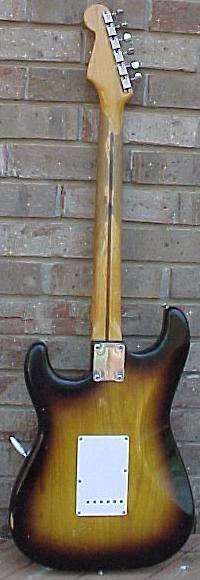
Note the one piece Ash body. Weight of the guitar is medium to light,
which is fairly rare for a vintage 1954 Strat. Generally 1954 models tend to
be heavy. Ash bodies were used on Strats until mid-1956, when
Fender switched to Alder (for all colors except Blond). I personally
prefer an Ash body. The sound of an Ash body Strat is usually richer,
compared to an Alder Strat. And the grain of the wood is much prettier.
The way Fender finished sunburst Ash bodies is slightly different
than how they finished Alder sunburst bodies, so the overall look
of the sunburst is slightly different too.
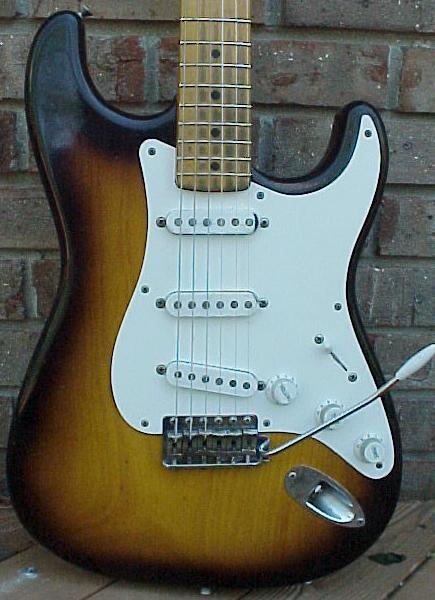
The body date of 8/54 in the rear tremolo cavity. Fender didn't always
put a body date here on a Stratocaster. Sometimes it's in the middle pickup route on
the front of the body during the 1950's. By the early 1960's, body date were no longer
the norm. By the mid 1960's, it is very rare to find any Fender with
a body date.
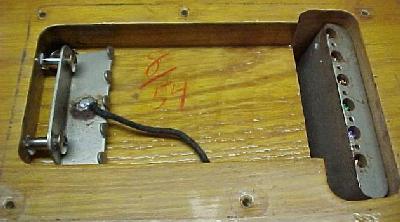
The neck date of 10-54 as signed by "T.G." (Tadeo Gomez). Fender
maintained neck dates until about 1970, but the signing of the
neck by the craftsmen stopped about 1955 or 1956.

The date on the middle pickup's 250k pot. The "304" means the
pot was made by Stackpole. The "435" following means
the pot was made about the 35th week of 1954. See
here for more info on dating pots and speakers.
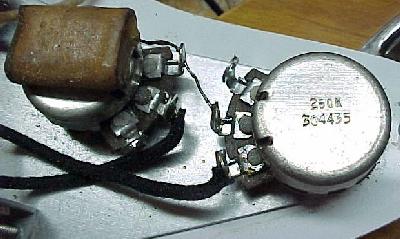
The last date shown on the guitar. "Gloria" left this
masking tape date of 11/9/54 with her name after she
finished soldering the electronics.
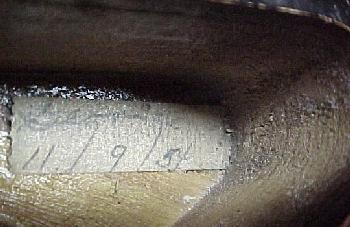
The "nail holes" used to hold the body when being painted. A finish nail is driven into the body at four positions to act as "feet" to elevate the body during finish spraying, and to allow it to dry. Later the nails are removed and discarded. The four nail holes should always be evident and NOT filled with paint! If the nail holes are missing or have paint in them, the body was refinished. Fender used this nail technique until about late 1964. See here for more details on Fender paint techniques.
Clockwise from the top left: the output
jack, on the bass side by the tremolo, on the treble cutaway horn,
and on the bass side by the neck pocket and neck pickup.
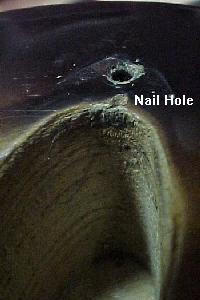
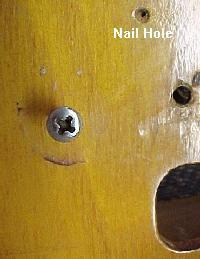
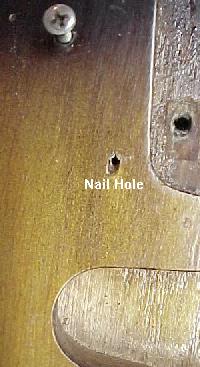
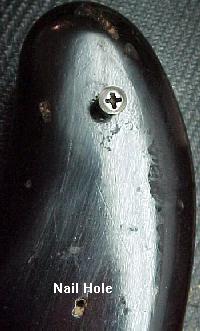
Underneath the single layer pickguard. All white single layer
Fender pickguards from 1954 to 1959 were made from a new material (at that time) called
ABS or vinyl. These pickguards are not bakelite! (though the knobs and pickup
covers are often called "bakelite", they are actually polystyrene).
The small aluminum sheilding plate
under the pots and switch increased in size and decreased in
thickness in 1959.
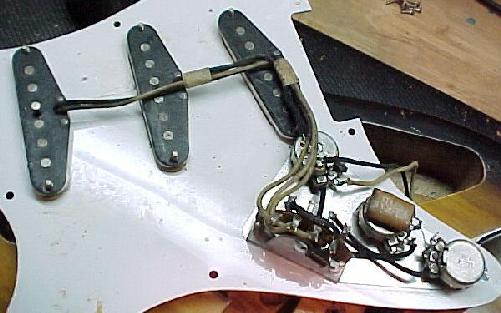
The body routes for the pickups and electronics.
Note the additional routing in the treble pickup cavity.
This is very common on 1954 strats. Apparently the
cable route for the pickup wires was not deep enough,
so this route was added (probably by Gloria!) after the guitar was
finished (hence the lack of paint in that route).
This is seen only on 1954 Strats.

The pickguard installed on the body. Note the "bakelite" (polystyrene)
parts. The neck and middle pickup cover is VERY worn, right through
to the black pickup itself. The treble pickup cover still has very
sharp edges (indicating little to no wear). Note the edges of
the volume knob are rounded compared to the other two tone
knobs, because it's used more.
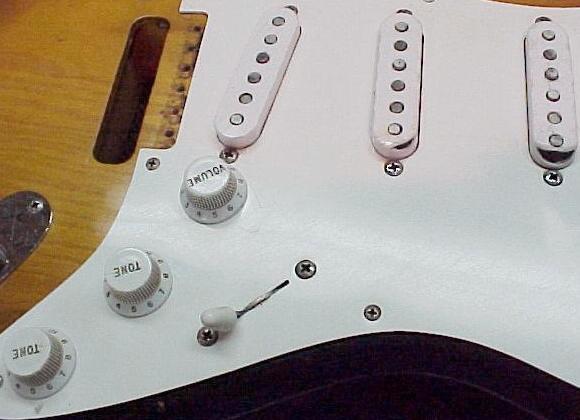
The back of the peghead. Note the tooling hole underneath
the tuners, between the "G" and the "D" tuner. This hole was used when the neck was made.
Fender mantained this tooling hole until the late 1960's.
The tuners are "no name" Kluson Deluxe tuners.

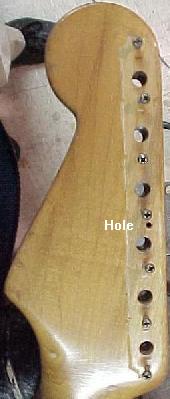
The end of the neck showing the other tooling
hole used when the neck was made.
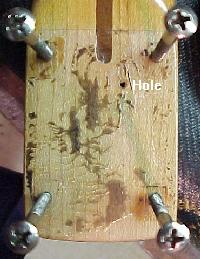
The back tremolo cover plate. Note the string
access holes are round. Starting in early 1955,
these holes changed to an oblong shape. This allowed the
strings to be changed easier with this cover in place.
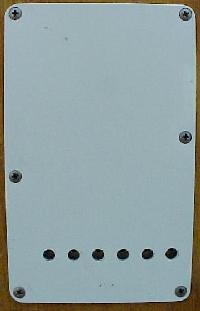
The Stratocaster tremolo as used from 1954
to early 1971. The bridge saddles are stamped "PAT. PEND."
opposed to reissue Strat saddles which are stamped
"FENDER FENDER" instead. Perhaps they did this so not
to confuse reissue saddles with the original 1954 to 1971
saddles. Or maybe because the patent was no longer pending.
